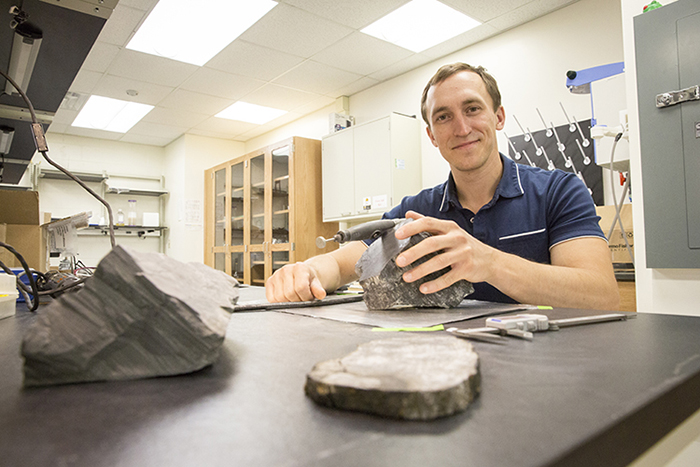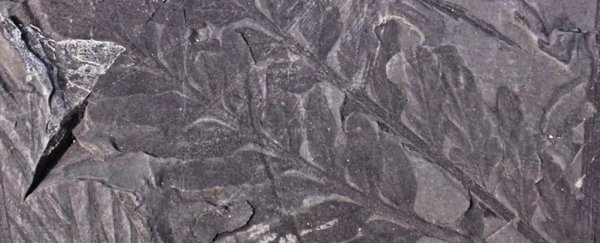Antarctica was not always the vast, icy expanse it is today. Around 260 million years ago, the continent was home to a lush patchwork of forests, and now scientists are studying their fossilised remains to understand more about our planet's past.
The forests would have been around when Antarctica was much warmer, at the end of the Permian Period and before the first dinosaurs – in fact, right around the time of the biggest mass extinction event in history.
Many scientists think that a massive increase in greenhouse cases, perhaps from volcanic eruptions in Siberia, caused this extinction event, and the team from the University of Wisconsin-Milwaukee is hoping to learn more about what happened through the fossils trapped under the ice.
In particular, the researchers are currently looking at a region called the McIntyre Promontory in the Transantarctic Mountains.
 Erik Gulbranson at work. (UWM Photo/Troye Fox)
Erik Gulbranson at work. (UWM Photo/Troye Fox)
"People have known about the fossils in Antarctica since the 1910-12 Robert Falcon Scott expedition," says one of the team, paleoecologist Erik Gulbranson.
"However, most of Antarctica is still unexplored. Sometimes, you might be the first person to ever climb a particular mountain."
These forests would have been made of hardy stuff. Even with the warmer temperatures, trees would have had to adapt to many months of darkness, and the experts think they would have become dormant in winter.
Quite how they hibernated through the dark and cold is one of the questions that these fossils might answer. Another is how these trees and plants could have switched between summer and winter modes so quickly with the changing conditions.
Based on previous research, there's evidence that both evergreen and deciduous trees were scattered around the edges of Antarctica hundreds of millions of years ago, and the new fossils suggest these ancient trees could turn their growing cycles on and off almost like a light switch.
It's also likely that the foliage was less diverse than it is in the forests of today, with different plant types having different functions in the overall survival of the ecosystem.
The team has yet to publish the results of its findings, but 13 tree fossil fragments have been recovered so far. Together with the rocks surrounding these fragments, they can teach us a lot about the ecosystems of the distant past, and what might have wiped out all of this life.
"This forest is a glimpse of life before the extinction, which can help us understand what caused the event," says Gulbranson.
Every trip to the icy wasteland has the potential to uncover something new, whether it's relics of a prehistoric past or evidence that unknown species could be thriving in certain places beneath the ice.
Further research and expeditions are planned for the coming months and through until January 2018, and ultimately we might discover some important lessons about how our planet is likely to react to the changing climate we have today.
"The geologic record shows us the beginning, middle and end of climate change events," says Gulbranson.
"With further study, we can better understand how greenhouse gases and climate change affect life on Earth."
